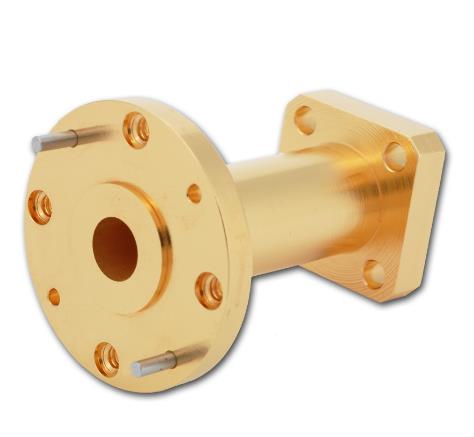How Do Waveguide Twists Influence Signal Path?
Waveguide twists are essential components in RF and microwave systems, designed to manipulate the orientation of the electromagnetic field within a waveguide. These twists play a crucial role in ensuring that the signal path remains efficient and undisturbed, even when the physical layout of the system requires changes in direction. Understanding the function and impact of waveguide twists is key to optimizing the performance of high-frequency transmission lines.

Maintaining Signal Integrity
Correcting Polarization
Waveguide twists are primarily used to correct the polarization of the electromagnetic waves traveling through the waveguide. Polarization refers to the orientation of the electric field vector in the wave. In many systems, particularly those involving multiple waveguide sections or complex geometries, maintaining consistent polarization is critical for minimizing signal loss and reflection. A typical waveguide twist can rotate the polarization by 90 degrees, ensuring that the waveguide sections are correctly aligned. This rotation helps in preventing mismatches and ensuring efficient signal transmission.
Minimizing Reflection and Loss
One of the main benefits of waveguide twists is their ability to reduce reflections and signal loss at junctions where the waveguide orientation changes. Poorly managed transitions can lead to significant signal degradation, but waveguide twists are designed to provide a smooth and continuous path for the signal. By carefully controlling the twist angle and maintaining a precise physical geometry, these components help in preserving the signal's strength and integrity. For example, a waveguide twist designed for X-band frequencies (8.2 to 12.4 GHz) can achieve insertion loss figures as low as 0.1 dB, indicating high efficiency.
Applications Across Various Technologies
Telecommunications
In telecommunications, waveguide twists are used to align the polarization of signals within satellite communication systems and ground stations. The precise alignment ensures that the transmitted and received signals maintain their integrity, leading to improved data rates and reduced error rates. This application is critical in maintaining the performance of long-distance communication links where signal degradation can severely impact the quality of service.
Radar Systems
Waveguide twists are also integral to radar systems, especially those deployed in aviation and maritime applications. These systems often require complex waveguide networks with numerous bends and twists to fit within confined spaces. The use of waveguide twists ensures that the polarization remains consistent throughout the system, which is essential for accurate target detection and tracking.
Scientific and Medical Equipment
In scientific research and medical imaging, such as MRI machines, waveguide twists are used to manage the orientation of high-frequency signals. These applications require precise control over the electromagnetic fields to achieve accurate measurements and imaging results. Waveguide twists help in maintaining the required field orientation, contributing to the overall effectiveness of the equipment.
Design and Material Considerations
Precision Engineering
The design of waveguide twists involves precise engineering to ensure that the twist provides the correct polarization change without introducing significant losses. The twist must be designed to fit seamlessly with the existing waveguide sections, maintaining the same internal dimensions and surface finish. High-quality waveguide twists are often manufactured using advanced techniques such as CNC machining to achieve the necessary precision.
Material Selection
Materials used in waveguide twists are chosen for their excellent electrical and thermal properties. Common materials include aluminum, copper, and brass, which offer good conductivity and durability. The internal surfaces are often plated with materials like silver or gold to enhance conductivity and minimize losses. For example, a waveguide twist used in high-power applications might be constructed from copper and then silver-plated to ensure optimal performance.
Waveguide Twist components are crucial for maintaining signal integrity in RF and microwave systems. By correcting polarization and minimizing reflections and losses, these twists ensure efficient signal transmission across complex waveguide networks. Their application in telecommunications, radar, and medical imaging underscores their importance in modern high-frequency technologies.
